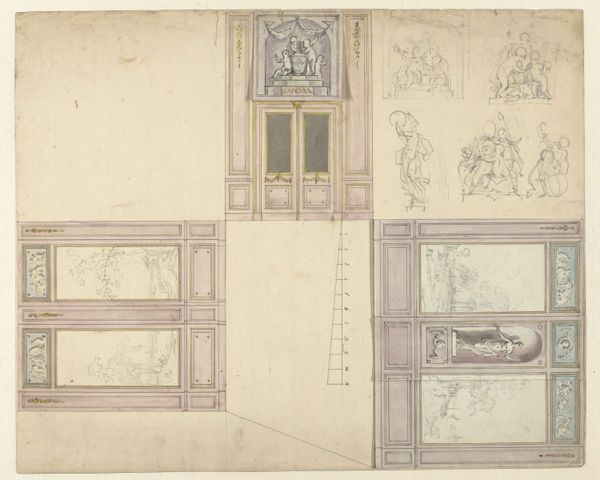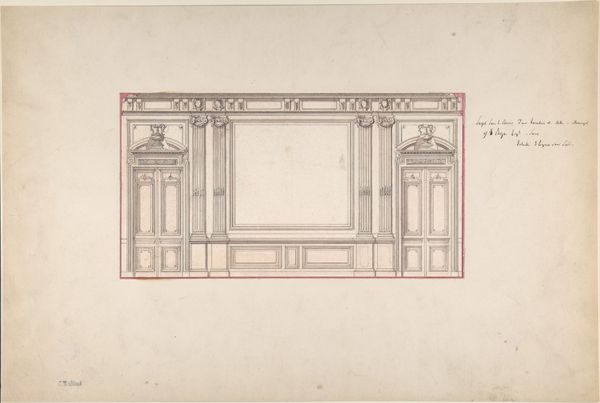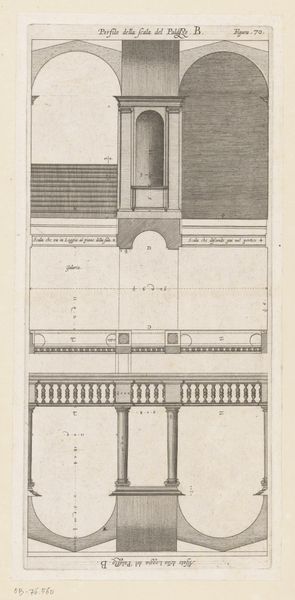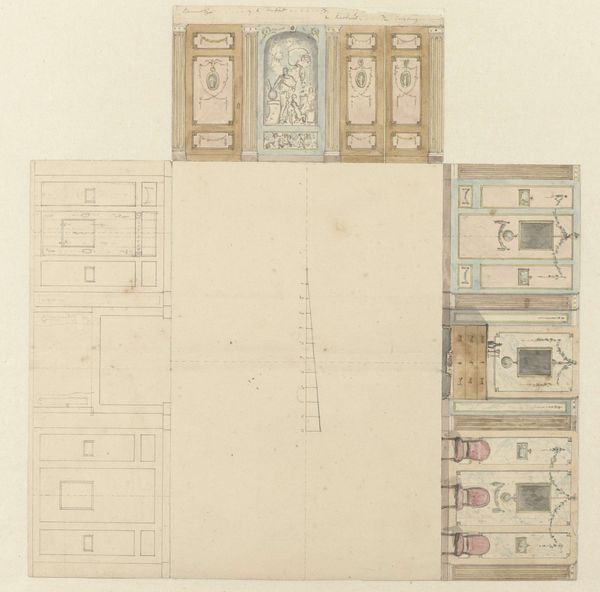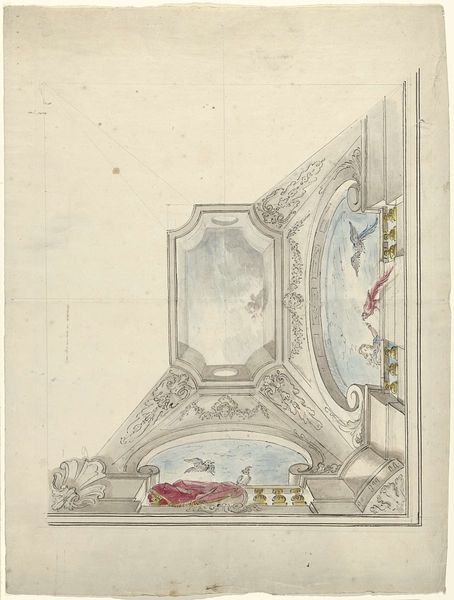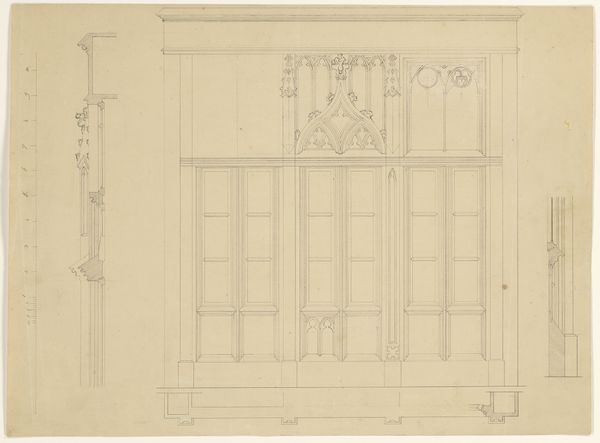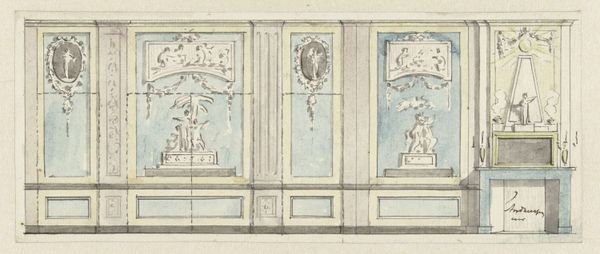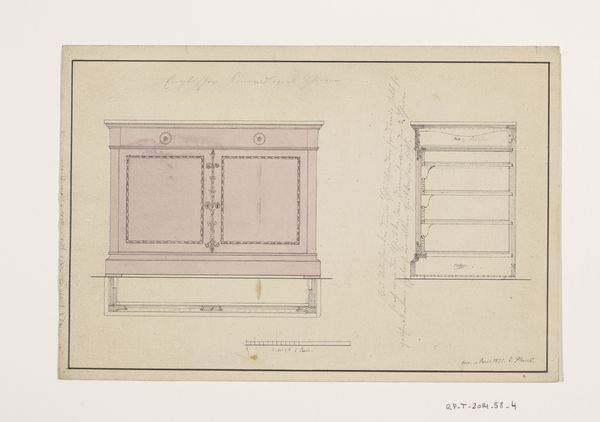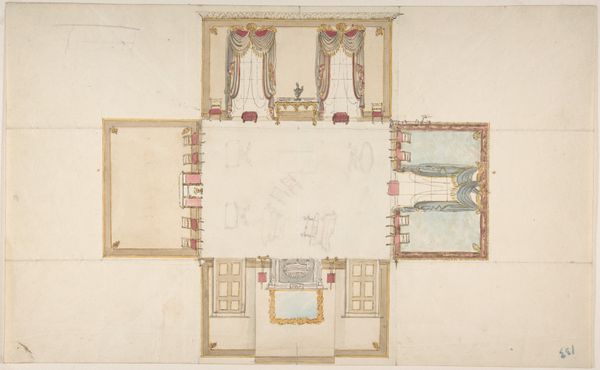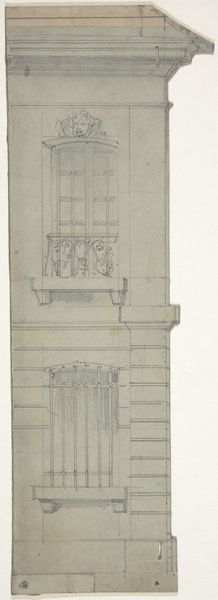
Ontwerp voor een kabinetje bij Arent van Hasselt, Keizersgracht 584, Amsterdam 1783
0:00
0:00
drawing, watercolor, pen, architecture
#
architectural sketch
#
house drawing
#
drawing
#
neoclacissism
#
aged paper
#
building study
#
toned paper
#
sketch book
#
watercolor
#
architectural section drawing
#
architectural drawing
#
architecture drawing
#
architectural proposal
#
pen
#
architecture
Dimensions: height 263 mm, width 270 mm, height 251 mm, width 253 mm
Copyright: Rijks Museum: Open Domain
Curator: Here we have Jurriaan Andriessen’s 1783 design for a cabinet at Arent van Hasselt's house. The materials? Pen, watercolor and touches of ink on toned paper. Editor: My first impression is one of delicate precision. The washes of pale color, the ruled lines... it all speaks to a very controlled and almost serene sensibility. Like looking into a dollhouse of the era. Curator: Precisely. It gives a great insight into the mindset of the time. It wasn’t simply about creating spaces, but designing experiences – composing narratives through objects, surfaces and, textures, from a sculpture of a philosopher or patron saint displayed prominently above, down to the gridwork of a hidden storage unit beneath. It almost reminds me of one of Piranesi's intricate etchings! Editor: Agreed. But look at how Andriessen meticulously breaks down each element: the sculpted niche, the paneling, the shelving. We can see both elevation and details for fabrication here. You see, that gridwork you call a storage unit may have contained fine silks or even spices – globally sourced luxuries of the Dutch Golden Age that reveal so much about the material conditions that fostered this elegance. This drawing served almost like a blueprint. Curator: Absolutely! The labor behind crafting this kind of architectural refinement—the unseen artisans, the careful sourcing—are all brought to life when you imagine this drawing transforming into physical form. You’re also hinting at the tensions inherent in Neo-classicism... the echoes of Imperial power re-fashioned as domestic grace? Editor: Right. The Neo-classical details, the idealized figures... they’re not just decorative. They tell stories, or better yet, they *sell* a narrative. Also, it’s a study in making something "grand" accessible. And consider that drawing as a social transaction. From Andriessen to Van Hasselt to us now, these design traditions, made accessible on paper, allowed styles to be communicated through artisan networks. Curator: What I find fascinating is Andriessen's attention to light, even in this sketch. He hints at how the cabinet would feel in a room. That makes the whole piece vibrate for me with its potential for inhabiting real space and its use for organizing both domestic objects and social hierarchy within the home. It brings it all down to a relatable human scale! Editor: I find myself appreciating even more the unseen labor that transformed these flat washes and controlled linework into three-dimensional reality! The drawing provides a rare moment of considering art not as high end result but, instead, how the artisan made and then others continued to build. Curator: Indeed. It has turned how I think about Neo-classicism and its aspirations and impact in the social fabric of that time, upside down. I won't see furniture quite the same. Editor: Exactly. This design speaks of practicality as much as poetry! A convergence, as always, that remains timeless!
Comments
No comments
Be the first to comment and join the conversation on the ultimate creative platform.
